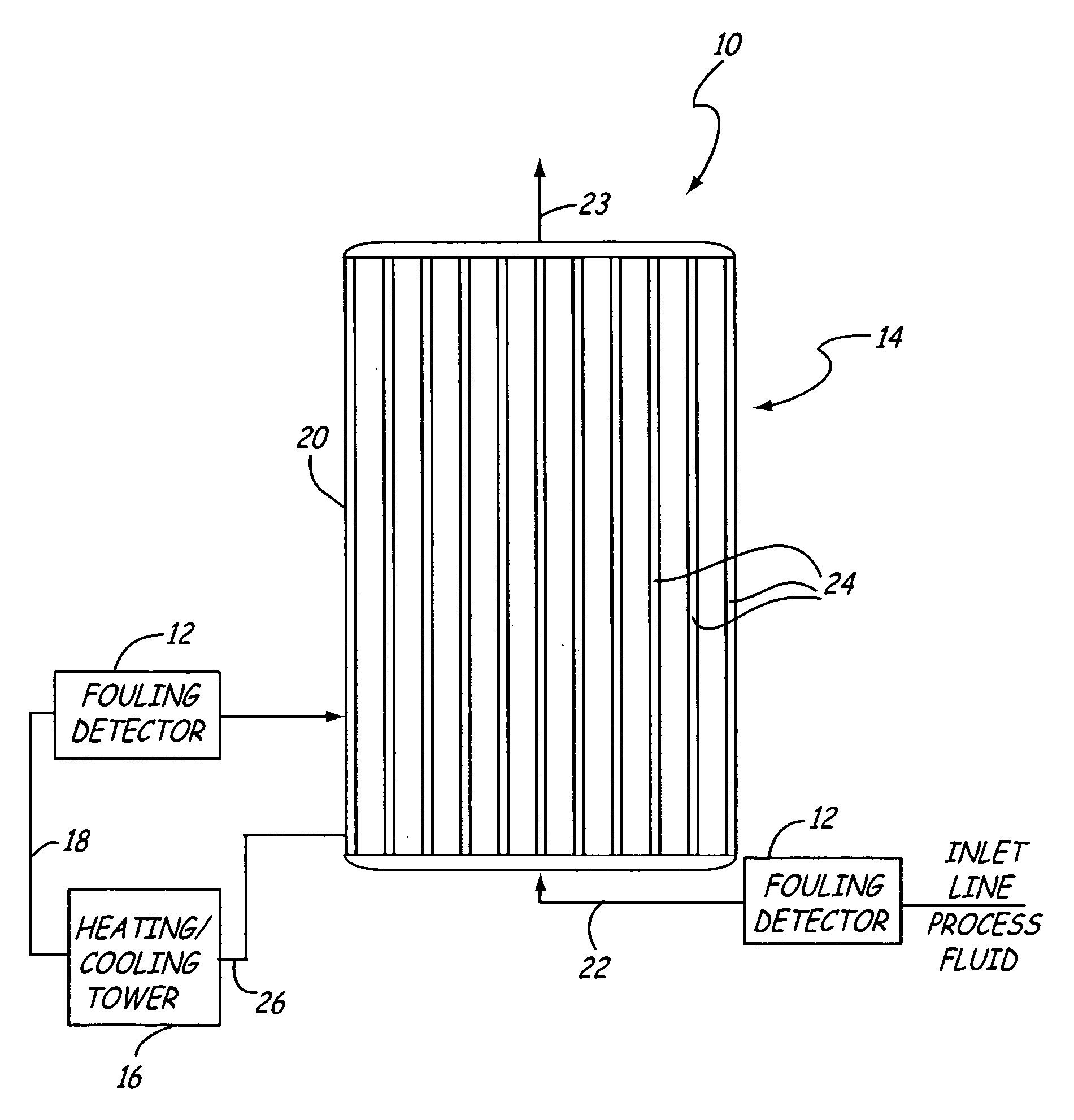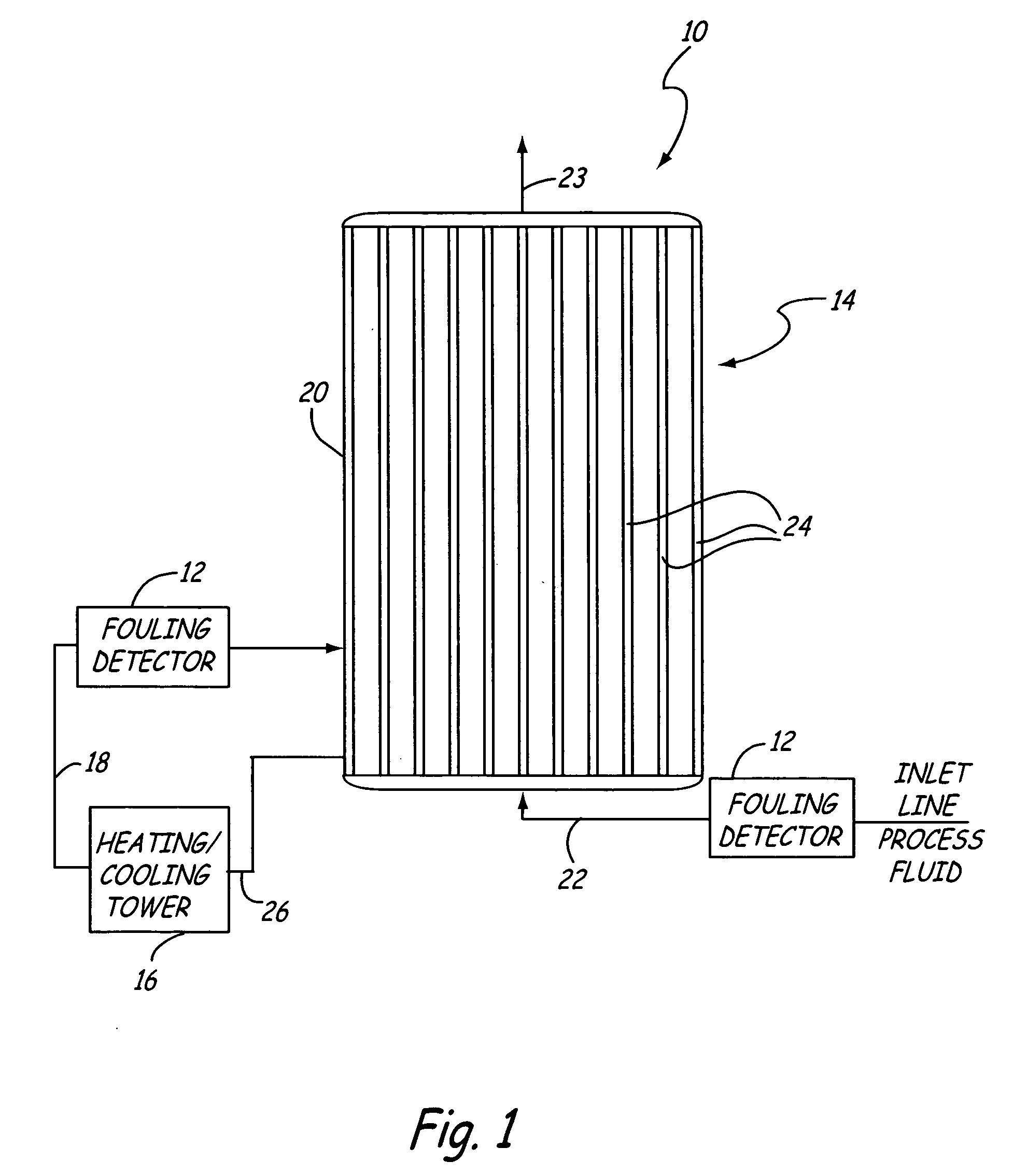Fouling and corrosion detector for process control industries
a technology for process control and detectors, applied in the direction of vibration measurement in solids, material analysis through optical means, instruments, etc., can solve the problems of corrosive properties, difficult detection, and common failure of heat exchangers
- Summary
- Abstract
- Description
- Claims
- Application Information
AI Technical Summary
Benefits of technology
Problems solved by technology
Method used
Image
Examples
Embodiment Construction
[0017] Generally, the present invention relates to a device that can be inserted in a process flow, preferably upstream from process elements, and that can be used to predict downstream fouling and corrosion conditions based on a resonant frequency of the device. The present invention also relates to techniques for predicting fouling and corrosion (or plugging) of process components based on a frequency response of a device positioned upstream from the process components.
[0018]FIG. 1 shows a simplified block diagram of a of an industrial process 10, including fouling detectors 12 and a heat exchanger 14. The heat exchange system includes a fouling detector 12 positioned upstream from a heat exchanger 14, which is in turn coupled to a recycling tower 16 according to an embodiment of the present invention. Many components of the heat exchange system, which are conventional in design and not part of the present invention, have been omitted or simplified, including many elements of the...
PUM
| Property | Measurement | Unit |
|---|---|---|
| corrosion | aaaaa | aaaaa |
| frequency response | aaaaa | aaaaa |
| damping coefficient | aaaaa | aaaaa |
Abstract
Description
Claims
Application Information
 Login to View More
Login to View More - R&D
- Intellectual Property
- Life Sciences
- Materials
- Tech Scout
- Unparalleled Data Quality
- Higher Quality Content
- 60% Fewer Hallucinations
Browse by: Latest US Patents, China's latest patents, Technical Efficacy Thesaurus, Application Domain, Technology Topic, Popular Technical Reports.
© 2025 PatSnap. All rights reserved.Legal|Privacy policy|Modern Slavery Act Transparency Statement|Sitemap|About US| Contact US: help@patsnap.com



